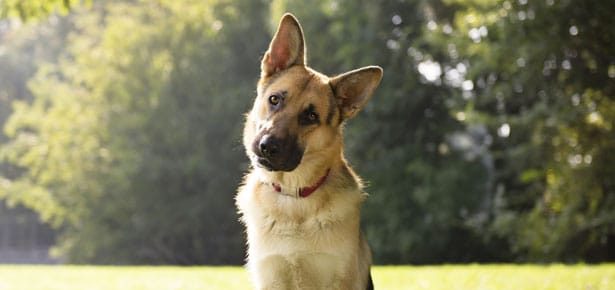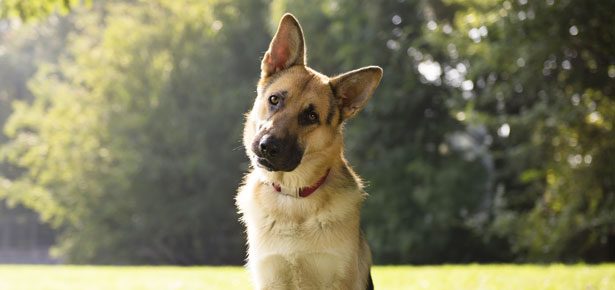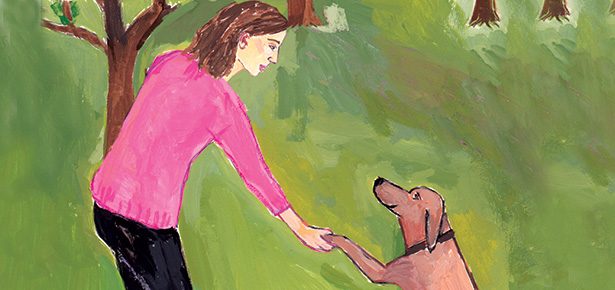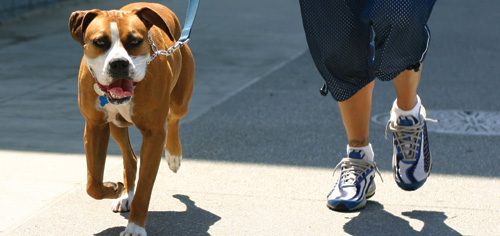

The Most Important Thing You Can Teach Your Dog
(The answer may surprise you)
When you read this article’s title, what came to mind? Was it “Don’t bite people,” or perhaps “Get along with other dogs,” or even “Don’t potty in the house?” True, those are all incredibly important things to teach any dog. But on a less dramatic note, for day-to-day living the most important thing you can teach your dog is how to ask politely for what he wants.
If you have kids, you’re already familiar with this concept. A four-year-old should not be smacking a parent when he wants a bite of pizza, and a ten-year-old shouldn’t be grabbing things off store shelves and demanding they be purchased. It’s Manners 101 for kids to say “Please” and “May I”…and yet many people never bother to apply those same concepts to their dogs.
As a trainer, I see the results of failing to train proper manners. Dogs bark at their owners for attention, paw at them for treats, and use their body and vocalizations in all sorts of inappropriate ways to get what they want. There is only one reason dogs continue to do these things: it works.
Since dogs can’t say, “Most wonderful owner, I would like very much to partake of that tasty treat,” how can they ask politely? It all starts with training. Your dog should have a repertoire of skills and behaviours that can be used as currency to earn rewards. Don’t worry, complicated behaviours or fancy tricks are unnecessary. Simple obedience skills will do.
Assuming your dog knows how to sit, he’s already got something you can use. At mealtimes, instead of plopping the dish down in front of him, hold on to it and ask for a sit. When his rear hits the floor, praise then put the food bowl down and let him eat. To take things up a notch, if your dog knows “wait” or “leave it,” ask for the sit then add the cue to wait or leave it. After a few seconds, give the release word to allow him to eat. If you use this approach, vary the time your dog must wait. Otherwise, he’ll learn that after, say, five seconds he eats, and anticipation can lead to breaking the wait too soon.
Sit can also be used for going out for a walk. Place a rug near the front door, and ask your dog to sit on it. If he knows “stay,” ask for that too. Begin to open the door. If he gets up, simply close the door and ask again for the sit. You may have to repeat this a few times, but most dogs learn quickly that getting up causes the door to close, while sitting makes it open. Magic!
Many dogs jump on people for attention, and sit can be used as an alternate behaviour. After all, a dog can’t be jumping and sitting at the same time. Other rewards for sitting can include receiving a treat, entering an off-leash area or being petted.
Sit is not the only thing your dog can do to earn rewards. Lying down is also useful and can be used interchangeably for most things. In fact, it’s best to vary the things you ask your dog to do. If, for example, you always ask for a sit at mealtime, your dog will soon offer sits in exchange for meals. That’s fine, but at that point you’re not really asking him to do anything. If you rotate between asking for a sit, a sit-stay, a down, and a paw shake, you are always requiring something in order to earn something valuable.
Teaching your dog to ask politely for what he wants reinforces your leadership and will make life with your dog all the more pleasant for the whole family.
Join the newsletter and never miss out on dog content again!
"*" indicates required fields
By clicking the arrow, you agree to our web Terms of Use and Privacy & Cookie Policy. Easy unsubscribe links are provided in every email.





